Testing saliva for human diseases has been around for as long as a century, but it was only about a decade ago that someone thought it might work for livestock as well.
 The swine industry is getting very close to being able to detect the presence of disease in a herd using a rope that pigs can chew on and leave their saliva for testing and that was the topic of two presentations Friday at the Boehringer Ingelheim swine health seminar in North Carolina.
The swine industry is getting very close to being able to detect the presence of disease in a herd using a rope that pigs can chew on and leave their saliva for testing and that was the topic of two presentations Friday at the Boehringer Ingelheim swine health seminar in North Carolina.
John Prickett with Iowa State University’s College of Veterinary Medicine has been studying oral fluid testing of swine for four years and he says the rope collection method works pretty well. “The pigs love it. They’re very inquisitive by nature, there’s not a lot for them to do and they are always looking for the ropes – they have fun with it,” he says.
 They have data on testing for a variety of diseases and now the work is moving forward with assay development, which Dr. Jeff Zimmerman of Iowa State University says is the key to making oral fluid testing affordable. “Between 12 and 18 months from now, we are going to have antibody-based assays that are ready to go,” Zimmerman said. “And that’s going to be when we start getting the costs down.”
They have data on testing for a variety of diseases and now the work is moving forward with assay development, which Dr. Jeff Zimmerman of Iowa State University says is the key to making oral fluid testing affordable. “Between 12 and 18 months from now, we are going to have antibody-based assays that are ready to go,” Zimmerman said. “And that’s going to be when we start getting the costs down.”
Zimmerman says disease control relies on good data and he says better data would have helped the industry get correct information about the H1N1 outbreak disseminated faster.
BIVI swine health seminar photo album
Listen to or download back-to-back interviews with John and Jeff here:

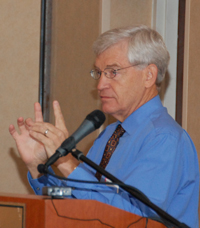 Swine producers need to carefully evaluate the costs of prevention versus treatment when it comes to disease in their herds.
Swine producers need to carefully evaluate the costs of prevention versus treatment when it comes to disease in their herds. 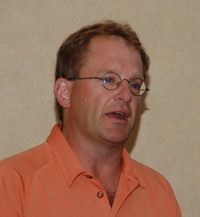 Better control of the air that hogs breathe offers the greatest promise for preventing the transmission of PRRSv that the industry has ever seen.
Better control of the air that hogs breathe offers the greatest promise for preventing the transmission of PRRSv that the industry has ever seen.
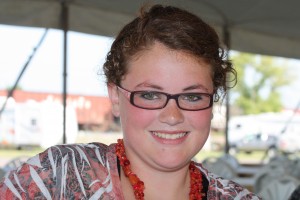
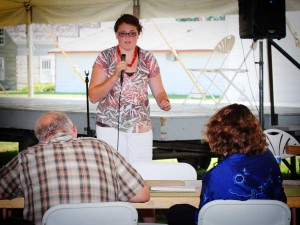
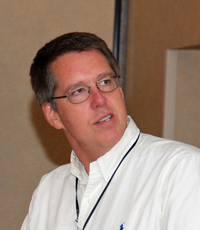
 It only seems fitting that a group known for encouraging original thought and innovative ideas for the agriculture industry would pick a man known for his irreverent style and sharp intellect to lead them. Professor of agricultural economics at Kansas State University, Barry Flinchbaugh, is now the Chair of the Board of Trustees of Farm Foundation.
It only seems fitting that a group known for encouraging original thought and innovative ideas for the agriculture industry would pick a man known for his irreverent style and sharp intellect to lead them. Professor of agricultural economics at Kansas State University, Barry Flinchbaugh, is now the Chair of the Board of Trustees of Farm Foundation.  The annual
The annual  The location is beautiful Carolina Beach at the Courtyard Marriott and the weather was beautiful this evening. The event will include a day long business session on Friday featuring the latest in swine health information for producers – and then a day of fun on Saturday for fishers, golfers and beach goers.
The location is beautiful Carolina Beach at the Courtyard Marriott and the weather was beautiful this evening. The event will include a day long business session on Friday featuring the latest in swine health information for producers – and then a day of fun on Saturday for fishers, golfers and beach goers.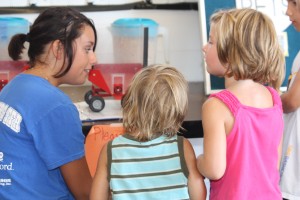
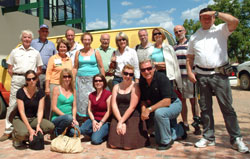 At the conclusion of the IFAJ Congress and Ag Media Summit there were a number of tours.
At the conclusion of the IFAJ Congress and Ag Media Summit there were a number of tours.